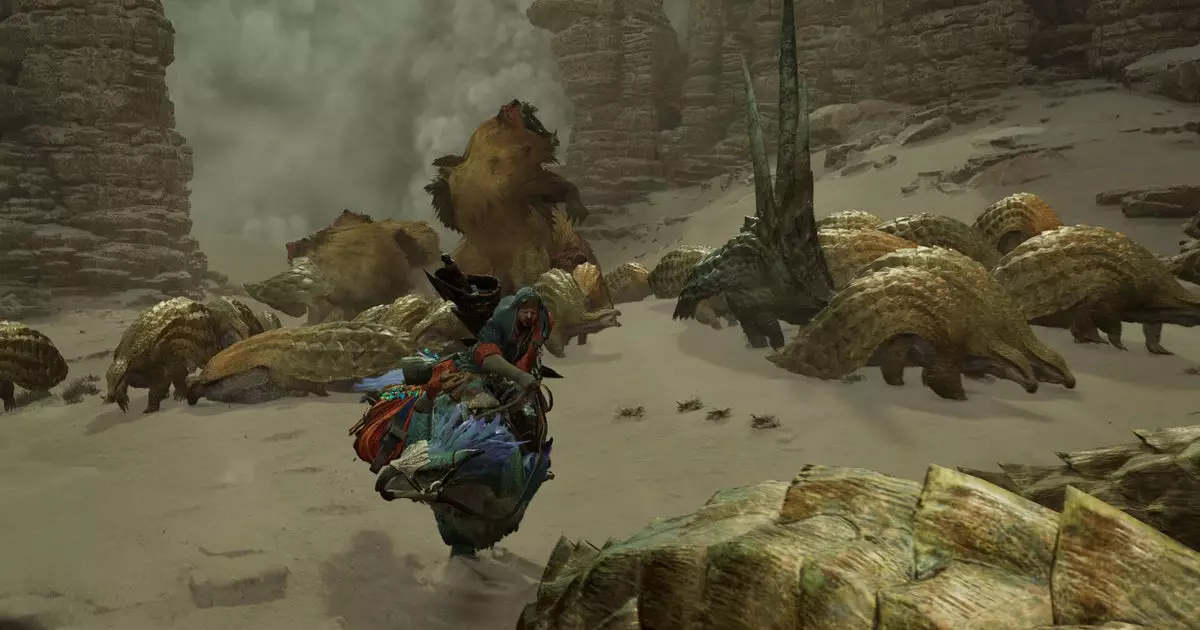Monsters roaring, hunters preparing, and a vibrant world waiting to be explored—this is the essence of the Monster Hunter franchise. With the introduction of *Monster Hunter Wilds,* anticipation runs high among fans eagerly diving into its beta. However, early impressions reveal a curious contention regarding the game’s combat mechanics, particularly the concept of ‘hitstop.’ This elusive term, often glossed over, plays a pivotal role in ensuring players feel the weight and power of their attacks.
At its core, hitstop is a mechanic that pauses the frame rate during the moment an attack connects with its target. This brief halt, lasting mere frames, enhances the sensation of impact, allowing players to appreciate the heft behind their strikes. The longer the hitstop—essentially the pause in the action—the more satisfying the attack feels. It is the difference between a *whack* and a *THWACK,* fundamentally shaping the player’s emotional connection to the combat experience.
Take, for example, the switch axe in *Monster Hunter Generations Ultimate,* where hitstop lasts eight frames at 30 frames per second (fps). This translates to a robust quarter of a second where a hunter can perceive the sheer strength of their attack. Contrast that with *Monster Hunter Wilds*, where a notable reduction or complete removal of hitstop has left some players feeling as though their blows lack potency and presence.
The response from the gaming community has been telling. While some players have expressed enjoyment in various aspects of the beta, others have voiced dissatisfaction with how the changes in hitstop translate to gameplay. A highlighted clip shared by a user known as Blue Stigma brings this debate to the forefront, dissecting the hitstop durations from previous iterations and juxtaposing them with *Wilds.*
Like many discussions within gaming, the opinions are varied. Some veteran players, accustomed to the visceral satisfaction of connecting strong hits, find the lighter feel of combat in the beta disappointing. Conversely, newer players may not have the same reference points and may judge the experience from a different lens. For them, the engaging visuals and stunning monsters may overshadow the nuances of hitstop, thereby masking potential frustrations.
Capcom’s decision to potentially modify hitstop mechanics appears to stem from a desire to innovate. Aiming for fluidity and perhaps a more dynamic combat experience is a commendable goal. However, balancing this fluid transition without losing the satisfying heft that fans have cherished can be challenging. It raises questions: How do you innovate without alienating core fans? And how can gameplay mechanics like hitstop be effectively adjusted without compromising player experience?
In the quest for smoother gameplay, Capcom may have inadvertently sacrificed the raw satisfaction that classes have had in previous iterations. The absence of hitstop, reduced or otherwise, can create a sense of disconnect between players and their avatars during combat, translating to a less gratifying experience.
So where do we go from here? Conversations within the community—whether on gaming platforms like X or through videos made by content creators—will be crucial in ensuring that the developers understand player sentiments. Dialogue between players and developers can yield beneficial insights that lead to informed adjustments in combat mechanics.
There is a palpable urgency for developers to listen and adapt. While *Monster Hunter Wilds* holds incredible potential with its stunning visuals and expansive world, the foundation of enjoyment rests primarily on engaging and satisfying combat. The game’s mechanics, especially the nuanced hitstop feature, warrant careful attention and consideration as the beta evolves into the final version.
While *Monster Hunter Wilds* aims to carve its own identity, it stands at a crossroads where player satisfaction must harmonize with innovation. As fans eagerly await deeper engagement with the weapons and monsters within, it remains to be seen how Capcom will navigate these rough waters and ultimately uphold the legacy of the franchise.


Leave a Reply